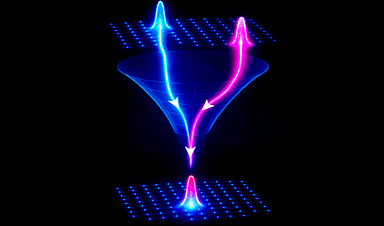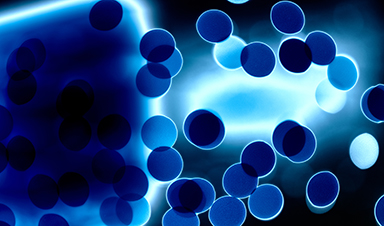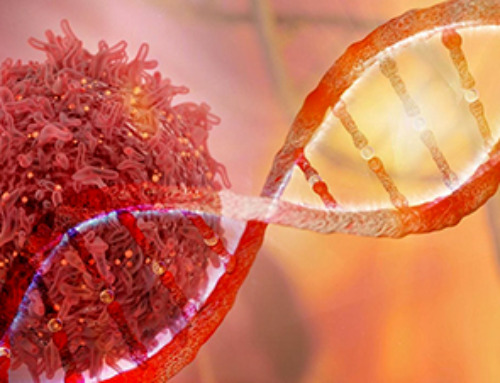In 1988, Richard Lenski, a thirty-one-year-old biologist at UC Irvine, started an experiment. He divided a population of a common bacterium, E. coli, into twelve flasks. Each flask was kept at thirty-seven degrees Celsius, and contained an identical cocktail of water, glucose, and other nutrients. Each day, as the bacteria replicated, Lenski transferred several drops of each cocktail to a new flask, and every so often he stored samples away in a freezer. His goal was to understand the mechanics of evolution. How quickly, effectively, creatively, and consistently do microorganisms improve their reproductive fitness?
Lenski's flasks produced about six new generations of E. coli a day; the bacteria woke up as babies and went to bed as great-great-great-grandparents. In this way, Lenski and his team have studied more than seventy thousand generations of E. coli over thirty-three years. Compared with their distant ancestors, the latest versions of the bacterium reproduce seventy per cent faster; it once took them an hour to double their ranks, but now they can do it in less than forty minutes. Different populations have taken different paths to enhanced fitness, but, after decades, most have arrived at reproduction rates within a few percentage points of one another.
Lenski's Long-Term Evolution Experiment, or L.T.E.E., as it's called, has yielded fundamental insights into the mutational capabilities of microorganisms. For his work, Lenski, now in his sixties and at Michigan State University, has received a MacArthur "genius" grant and a Guggenheim Fellowship. "I'm not sure I can tell you how it's affected my thinking, because I'm not sure I can conceive of being in this field without this experiment existing," Michael Baym, an evolutionary biologist at Harvard Medical School, recently told Discover.
Three of the experiment's key findings are especially relevant today. The first is that, in general, there were diminishing returns to mutation over time: the bacteria made many of their most reproductively advantageous moves early on. A second finding, however, was that the bacteria never stopped getting fitter. Seventy thousand generations in, they're still finding new ways to improve, albeit at a somewhat slower rate. "I had sort of imagined that things would have flatlined," Lenski told me recently, when we spoke over Zoom. "But there seem to be endless possibilities for tinkering and progress. If there is a hard limit, it's so, so far away that it's impractical to consider on an experimental timescale—maybe even a geological timescale."
Lenski has a friendly, expressive face, with pale blue eyes and a neat beard; his voice pulses with excitement when he considers a provocative question or explains the implications of his research. He told me about a third major finding: in 2003, some fifteen years and thirty thousand generations into the experiment, Lenski arrived at his lab to find that, overnight, a flask that was normally fairly translucent had turned cloudy. The bacteria it contained had experienced an explosive surge in growth. Normally, E. coli eat mainly glucose, but this population had unlocked an entirely new source of energy: a chemical compound called citrate. The capacity to metabolize citrate is so unusual that no population in the study had developed it until that point, and none have attained it since. It's as if a family of humans could suddenly drink salt water.
sars-CoV-2, the virus that causes covid-19, has already had one citrate moment: the instant, probably sometime in 2019 but possibly earlier, when it developed the ability to leap into humans. Since then, the virus has accumulated innumerable mutations, some of which allow it to generate copies of itself more efficiently—by altering how it binds to our cells, for instance, or by finding new ways to slip past our immune systems. It's a process that has occurred with every infectious disease in history—measles, tuberculosis, bubonic plague, influenza, and untold others. The difference with the coronavirus is that the world is now watching every mutational move as it happens.
During this pandemic, we've developed and deployed vaccines in real time. Meanwhile, sars-CoV-2 is replicating not in a dozen flasks but in tens of millions of people, some of whom have been immunized, all of whom exert selective pressure for the virus to find new, more efficient replication strategies. The virus will continue to mutate every moment of every day, for years, for decades. The fear is that it will hit upon a second citrate moment: a mutation, or set of mutations, that enables it to circumvent our vaccines, which so far have proved spectacularly effective and resilient. For those who remain unvaccinated—the majority of humankind—there is also the horrifying prospect of a variant that is vastly more contagious or deadly. Every few months, we learn of a version of the virus that seems somehow worse: Alpha, Beta, Gamma, Delta. The coronavirus appears destined to march its way through the Greek alphabet—a prizefighter getting quicker, slicker, stronger with each opponent. What are the limits to its evolutionary fitness? Are they knowable? And, if so, how close are we to reaching them?
These were the questions on my mind as I spoke with experts in an effort to understand the future of the pandemic. With questions so complex, it's helpful to start by figuring out what, exactly, we want to know. For each new coronavirus variant, we want to find out if it's more transmissible, if it will make us sicker, and if it will more effectively get around our immune defenses. On that last front, we want to understand two more questions: How much will it succeed in hiding from our antibodies (which recognize and bind to the virus, preventing infection) and from our T cells (which recognize chopped-up viral fragments displayed by infected cells, and specialize not in preventing infection but in controlling and terminating it).
Roberto Burioni, a physician and professor at Vita-Salute San Raffaele University, in Milan, has been called the most famous virologist in Italy; he has written about the prospects for a "final" variant, a version of the coronavirus that has reached maximum transmissibility, and which becomes "the dominant strain, experiencing only occasional, minimal variations." As Burioni sees it, there are three potential futures for the coronavirus. The first—the most optimistic for us—is one in which the virus simply can't evolve its way around the vaccines. This is not an unlikely possibility. Many viruses—measles, mumps, rubella, polio, smallpox—have never meaningfully circumvented their vaccines, and so far the best of our current jabs have remained remarkably protective against new coronavirus variants, including Delta….
News
New nanomedicine wipes out leukemia in animal study
In a promising advance for cancer treatment, Northwestern University scientists have re-engineered the molecular structure of a common chemotherapy drug, making it dramatically more soluble and effective and less toxic. In the new study, [...]
Mystery Solved: Scientists Find Cause for Unexplained, Deadly Diseases
A study reveals that a protein called RPA is essential for maintaining chromosome stability by stimulating telomerase. New findings from the University of Wisconsin-Madison suggest that problems with a key protein that helps preserve chromosome stability [...]
Nanotech Blocks Infection and Speed Up Chronic Wound Recovery
A new nanotech-based formulation using quercetin and omega-3 fatty acids shows promise in halting bacterial biofilms and boosting skin cell repair. Scientists have developed a nanotechnology-based treatment to fight bacterial biofilms in wound infections. The [...]
Researchers propose five key questions for effective adoption of AI in clinical practice
While Artificial Intelligence (AI) can be a powerful tool that physicians can use to help diagnose their patients and has great potential to improve accuracy, efficiency and patient safety, it has its drawbacks. It [...]
Advancements and clinical translation of intelligent nanodrugs for breast cancer treatment
A comprehensive review in "Biofunct. Mater." meticulously details the most recent advancements and clinical translation of intelligent nanodrugs for breast cancer treatment. This paper presents an exhaustive overview of subtype-specific nanostrategies, the clinical benefits [...]
It’s Not “All in Your Head”: Scientists Develop Revolutionary Blood Test for Chronic Fatigue Syndrome
A 96% accurate blood test for ME/CFS could transform diagnosis and pave the way for future long COVID detection. Researchers from the University of East Anglia and Oxford Biodynamics have created a highly accurate [...]
How Far Can the Body Go? Scientists Find the Ultimate Limit of Human Endurance
Even the most elite endurance athletes can’t outrun biology. A new study finds that humans hit a metabolic ceiling at about 2.5 times their resting energy burn. When ultra-runners take on races that last [...]
World’s Rivers “Overdosing” on Human Antibiotics, Study Finds
Researchers estimate that approximately 8,500 tons of antibiotics enter river systems each year after passing through the human body and wastewater treatment processes. Rivers spanning millions of kilometers across the globe are contaminated with [...]
Yale Scientists Solve a Century-Old Brain Wave Mystery
Yale scientists traced gamma brain waves to thalamus-cortex interactions. The discovery could reveal how brain rhythms shape perception and disease. For more than a century, scientists have observed rhythmic waves of synchronized neuronal activity [...]
Can introducing peanuts early prevent allergies? Real-world data confirms it helps
New evidence from a large U.S. primary care network shows that early peanut introduction, endorsed in 2015 and 2017 guidelines, was followed by a marked decline in clinician-diagnosed peanut and overall food allergies among [...]
Nanoparticle blueprints reveal path to smarter medicines
Lipid nanoparticles (LNPs) are the delivery vehicles of modern medicine, carrying cancer drugs, gene therapies and vaccines into cells. Until recently, many scientists assumed that all LNPs followed more or less the same blueprint, [...]
How nanomedicine and AI are teaming up to tackle neurodegenerative diseases
When I first realized the scale of the challenge posed by neurodegenerative diseases, such as Alzheimer's, Parkinson's disease and amyotrophic lateral sclerosis (ALS), I felt simultaneously humbled and motivated. These disorders are not caused [...]
Self-Organizing Light Could Transform Computing and Communications
USC engineers have demonstrated a new kind of optical device that lets light organize its own route using the principles of thermodynamics. Instead of relying on switches or digital control, the light finds its own [...]
Groundbreaking New Way of Measuring Blood Pressure Could Save Thousands of Lives
A new method that improves the accuracy of interpreting blood pressure measurements taken at the ankle could be vital for individuals who are unable to have their blood pressure measured on the arm. A newly developed [...]
Scientist tackles key roadblock for AI in drug discovery
The drug development pipeline is a costly and lengthy process. Identifying high-quality "hit" compounds—those with high potency, selectivity, and favorable metabolic properties—at the earliest stages is important for reducing cost and accelerating the path [...]
Nanoplastics with environmental coatings can sneak past the skin’s defenses
Plastic is ubiquitous in the modern world, and it's notorious for taking a long time to completely break down in the environment - if it ever does. But even without breaking down completely, plastic [...]





















